A Industry Leading Company in Regolith Systems.
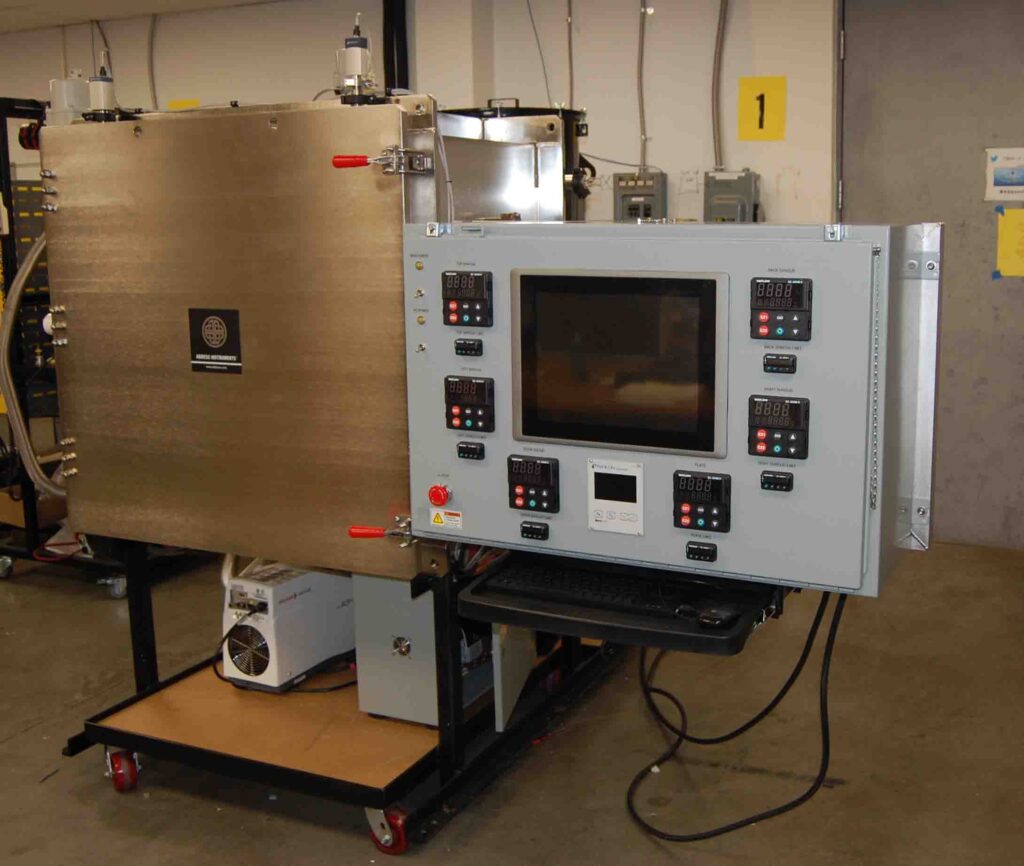
| Definition |
| Synopsis |
| Research and Information |
| Systems We’ve Built |
| Lunar Stimulants |
To the left is one of our Lunar Regolith TVAC Systems with our integrated PC system. Click the image to learn more!
Definition:
Regolith is a blanket of unconsolidated, loose, heterogeneous superficial deposits covering solid rock. It includes dust, broken rocks, and other related materials and is present on Earth, the Moon, Mars, some asteroids, and other terrestrial planets and moons (Oxford Dictionary, 2021).
Synopsis:
Lunar regolith is the layer of loose, fragmented material covering the solid bedrock on the Moon’s surface. Composed primarily of fine dust, small rocks, and debris, lunar regolith is the result of billions of years of meteoroid impacts breaking down the Moon’s surface rocks into smaller pieces.
This regolith varies in depth and composition across different lunar regions but generally consists of silicate materials, such as basalt and anorthosite, mixed with minute traces of other elements. Its unique characteristics include a lack of organic matter and the presence of tiny glass beads formed by past volcanic activity.
Scientists study lunar regolith to gain insights into the Moon’s geological history, its potential resources, and its potential use as a stepping stone for future lunar exploration and colonization. Lunar regolith is a valuable resource for extracting water, oxygen, and other essential materials for supporting human missions and building infrastructure on the Moon. Understanding its properties is crucial for planning sustainable lunar missions and advancing our understanding of our celestial neighbor.
Research and Information:
General Overview
The lunar soil is a somewhat cohesive, dark grey to light grey, very-fine-grained, loose, clastic material derived primarily from the mechanical disintegration of basaltic and anorthositic rocks. The mean grain size of analyzed soils ranges from about 40 µm to about 800 µm and averages between 60 and 80 µm. Individual lunar soil particles are mostly glassbonded aggregates (agglutinates), as well as various rock and mineral fragments. The soils range in composition from basaltic to anorthositic, and they include a small (<2%) meteoritic component. Although the chemical compositions of lunar soils show considerable variation, physical properties such as grain size, density, packing, and compressibility are rather uniform.
Petrography
Petrographic studies of regolith samples make it possible to characterize the material in two complementary ways: by the relative proportions of different kinds of fragments and by the chemical and mineral compositions of individual rock and mineral fragments. These studies are done by examining thin sections of regolith samples with an optical microscope or by studying individual regolith particles with a scanning electron microscope (SEM). Optical studies of regolith samples make it possible to conduct a census of the relative amounts (by volume) of different particles—rocks, mineral and glass fragments, and other components—in each sample. This determination of relative volumes of components, a process called modal analysis, can be expanded to estimate the chemical composition of the soil as well if chemical data for individual mineral, rock, and glass components can be summed. (Usually, the chemical data for fragments are determined directly with an electron microprobe.) The bulk chemical composition, reconstructed in this way, can be compared with destructive “whole rock” chemical analyses. The chemical analyses can be used to interpret the sources for particles, origin, and evolution of the soil sample.


Components of Lunar Regolith:
Lunar regolith is made up of rock chips, mineral fragments, impact and volcanic glasses and a peculiar component only found on the Moon called “agglutinates” (Figure 1). The ratio of these various components varies widely from one soil to the next (Figure 2).


Agglutinates, aggregates of mineral fragments held together with glass, are a major component of lunar soils, composing up to 60 or 70% of some soils. They are formed when a micrometeorite impact melts a small amount of soil.
Lunar Simulants:
Lunar simulants are terrestrial materials that mimic aspects of lunar regolith for testing of technology that would interact with lunar surface material. The goal of simulants is mission risk reduction by providing confidence, through testing with simulants, that a technology will perform as designed on the lunar surface.
Shown below is a thermal bin that Abbess has supplied many national facilities, which allows for thermal contact with their lunar stimulant.
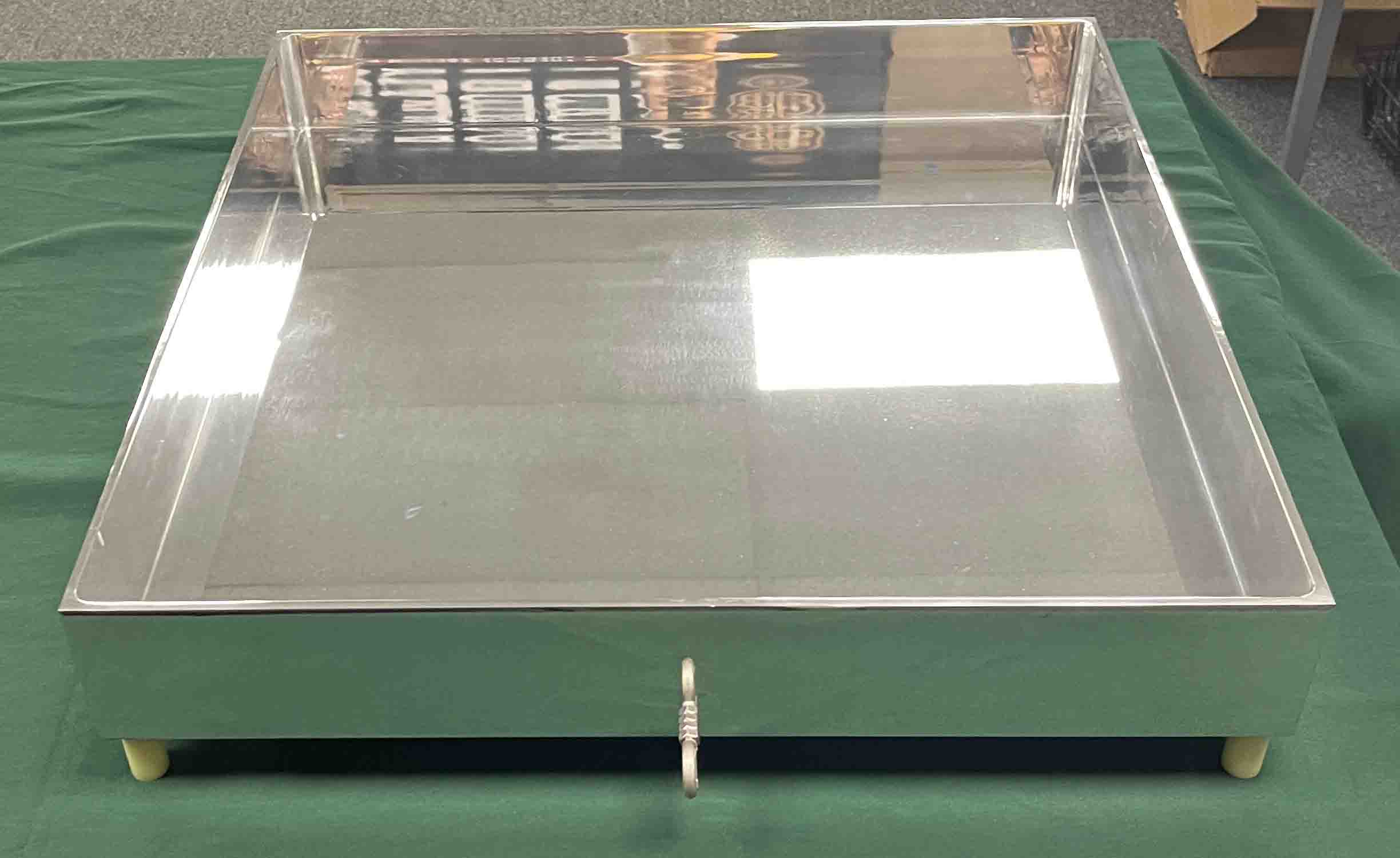
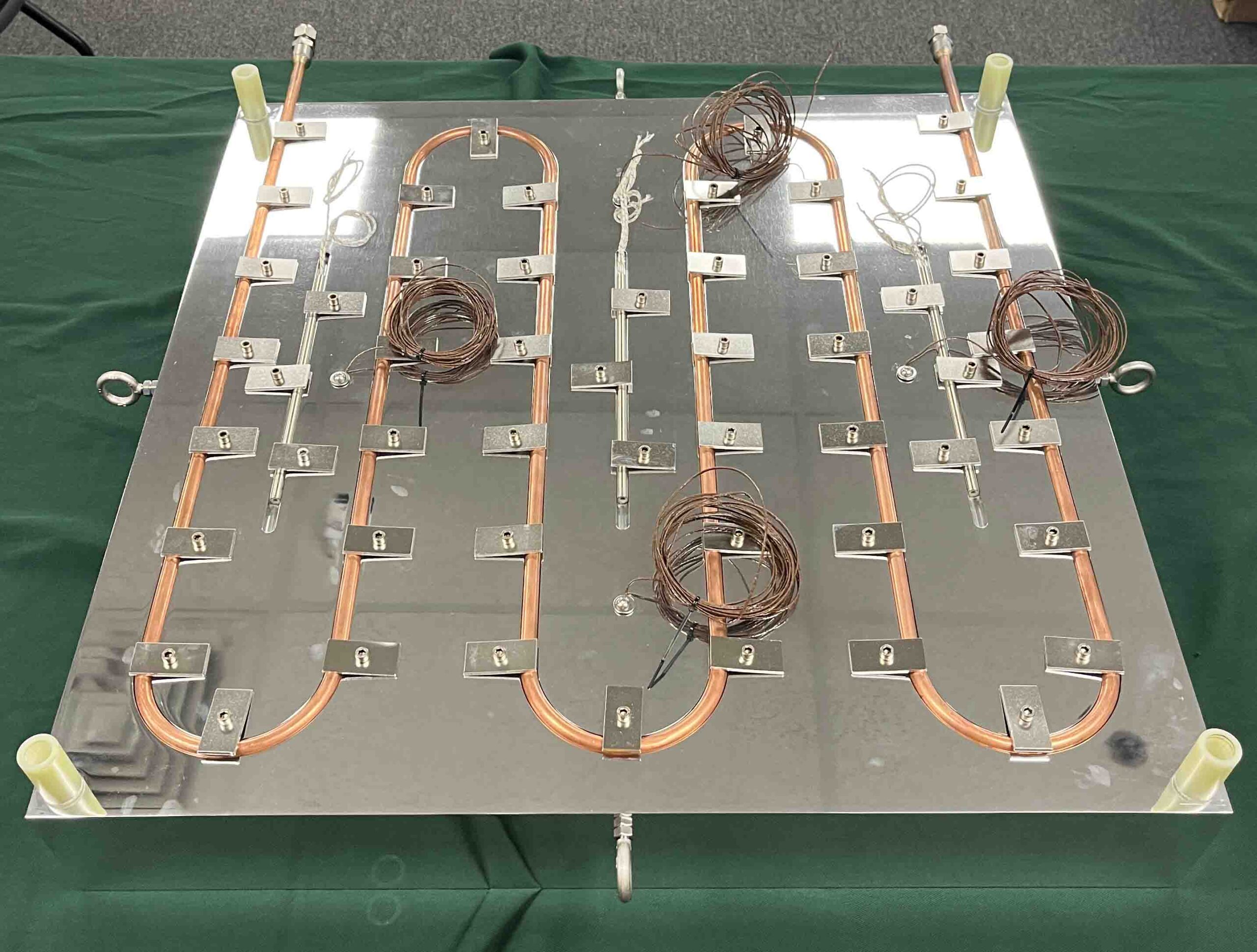
Systems We’ve Built:

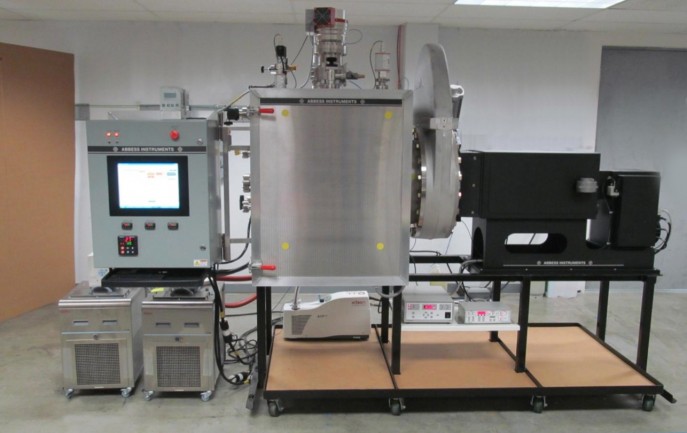
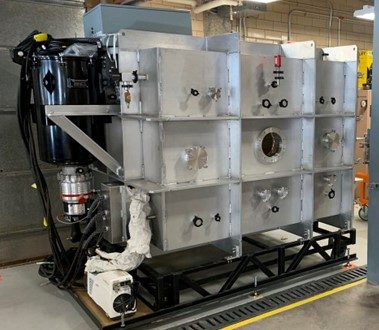
Sources:
McKay, David S.; Heiken, Grant; Basu, Abhijit; Blanford, George; Simon, Steven; Reedy, Robert; French, Bevan M.; Papike, James (1991), “The Lunar Regolith” (PDF), in Heiken, Grant H.; Vaniman, David T.; French, Bevan M. (eds.), Lunar Sourcebook: A User’s Guide to the Moon, Cambridge
“regolith“. Lexico UK English Dictionary. Oxford University Press. Archived from the original on 28 April 2021.
Heiken, G._.-TI975) Rev. Geophys. and Space Phys., V. 13, p. 567-587.
Keller L. P., Wentworth S. J., McKay D. S., Taylor L. A., Pieters C. M. and Morris R. V (2000) Space weathering in the fine size fractions of lunar soil: Mare/highland differences (abstract #1655). 31st Lunar and Planetary Science Conference. CD-ROM.
Simon et al (1981) The lunar regolith: Comparative studies of the Apollo and Luna sites Petrology of soils from Apollo 17, Luna 16, 20 and 24. Proceedings, 12th Lunar and Planetary Science Conference, pp. 371-388.
Myers, C. (2003). Lunar Regolith . NASA.
National Aeronautics and Space Administration / United States Geological Survey – Lunar Highlands Type (NU-LHT) series: Highlands simulant based on an average composition of Apollo 16 regolith samples and produced from rocks of the Stillwater Complex (Montana, United States) with laboratory-developed glasses [Stoeser et al., 2011]. The second generation of NU-LHT simulant contains trace apatite, pyrite, and synthetic whitlockite [Stoeser et al., 2011].


